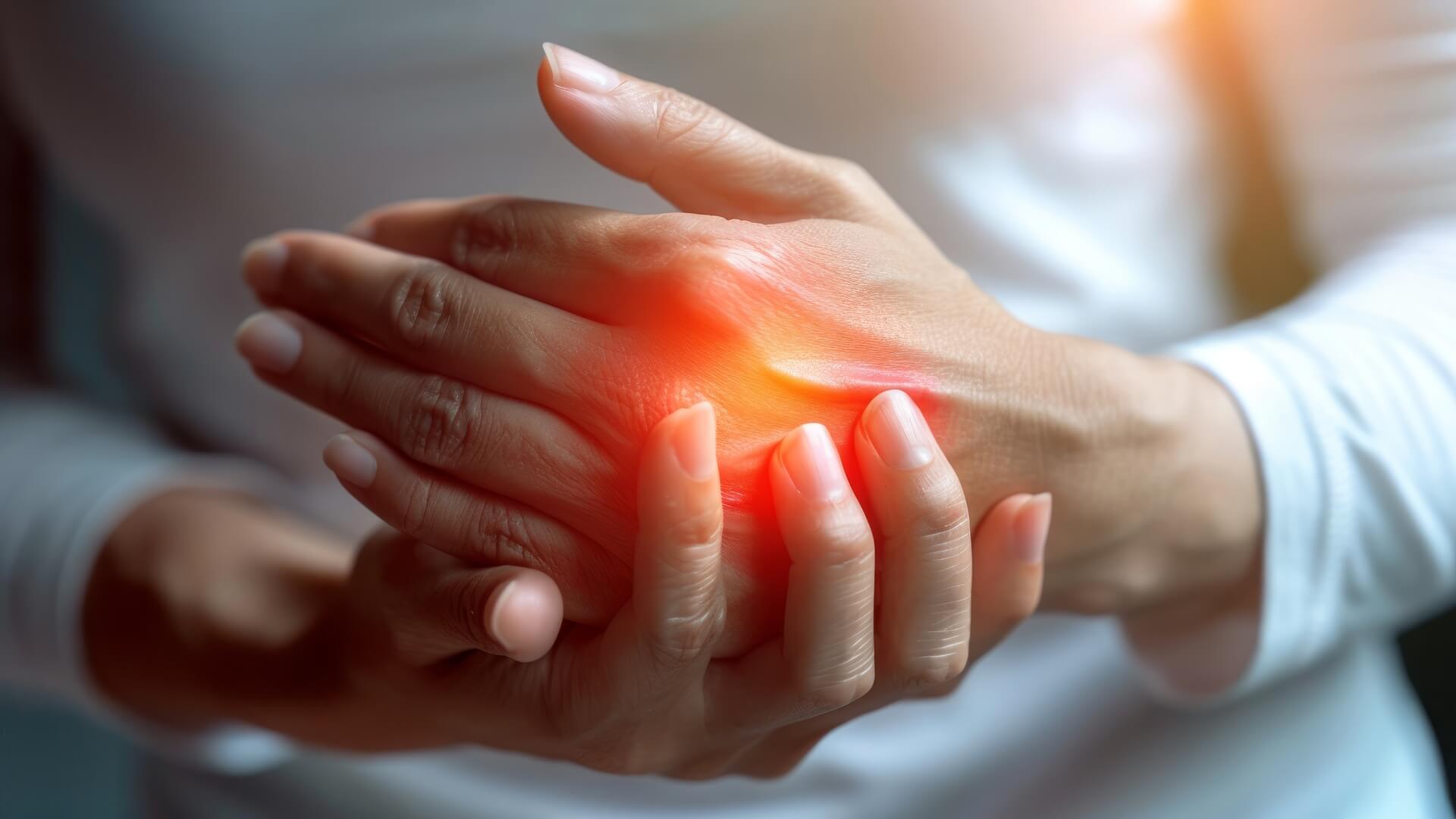Hand disorders have a major impact on quality of life. Discover the 3 most common conditions, their causes and treatment.
1. Trigger finger
Trigger finger is a common disorder that causes pain, clicking or locking when the finger is bent. Normally, flexor tendons glide smoothly, thus allowing the finger to move. However, in the case of trigger finger, the tendon or tendon sheath becomes swollen or develops a lump, interfering with finger motion.
Causes
The exact causes of trigger finger are unknown, but some risk factors are associated with this hand disorder. Trigger finger is more common in women over the age of 50, and there is greater prevalence in patients with diabetes, rheumatic diseases or other inflammatory conditions.
Symptoms
The symptoms of trigger finger can range from mild discomfort to severe pain. In addition to a locking sensation when moving the finger, other frequent symptoms include increased sensitivity, swelling and stiffness in the affected finger. In some cases, an audible click is heard when moving the finger.
Treatment
The treatment for trigger finger depends on the severity of the symptoms. In the early stages, when symptoms are mild, conservative measures may be sufficient to treat the condition. This approach usually includes the use of orthotics, anti-inflammatory drugs or corticosteroid injections, if necessary. Surgical treatment is the next option. The procedure involves releasing the tendon sheath to allow for smoother finger motion.
2. Carpal tunnel syndrome
Carpal tunnel syndrome results from the compression or inflammation of the median nerve, which passes through the wrist. The median nerve provides sensitivity to the thumb, index finger, middle finger, and half of the ring finger.
Causes
Carpal tunnel syndrome can occur due to several factors. Some people have a narrow carpal tunnel, which increases the likelihood of median nerve compression. However, this hand disorder is mostly associated with activities that require repeated use of the wrist and hand, whether for work or sports. This condition is more common in women between the ages of 40 and 60, and there is a notable increase in patients with diabetes or rheumatic diseases. It can also appear during pregnancy.
Symptoms
The symptoms of carpal tunnel syndrome can vary in intensity, but usually involve pain, numbness and weakness in the hand, wrist and fingers. Symptoms tend to be worse at night.
Treatment
Conservative treatment is usually sufficient in the early stages of this condition or when symptoms are mild. This type of treatment includes wearing a splint at night, anti-inflammatory medication if necessary, or corticosteroid injections. If the symptoms persist or are severe, surgery may be considered. The procedure involves cutting the roof of the carpal tunnel to relieve pressure on the median nerve.
3. Distal radius fracture
A distal radius fracture is one of the most common hand disorders. This is often called a “broken wrist” and the resulting deformity can be visible.
Causes
The primary cause of a distal radius fracture is falling onto an outstretched hand. This type of fall can occur in various situations, such as tripping, slipping or playing sports, among others. The force of the direct impact on the wrist can be sufficient to fracture the radius in the distal region. This injury occurs more frequently in women and is associated with osteoporosis.
Symptoms
The most common symptoms of a distal radius fracture include pain, swelling, deformity, impaired wrist motion and sensitivity to touch in the fractured area.
Treatments
The treatment for a distal radius fracture depends on the severity and the position of the bone fragments. In some cases, a conservative treatment may be enough, involving immobilisation of the forearm and wrist with a splint or cast, to allow the bone to heal properly. This normally takes between 4 to 6 weeks and is complemented with painkillers. In serious cases, or when the bone fragments are significantly misaligned, surgical intervention may be necessary. Surgery usually involves realigning the fractured bones using plates, screws or other fasteners to hold the fragments in the correct position during the healing process.






